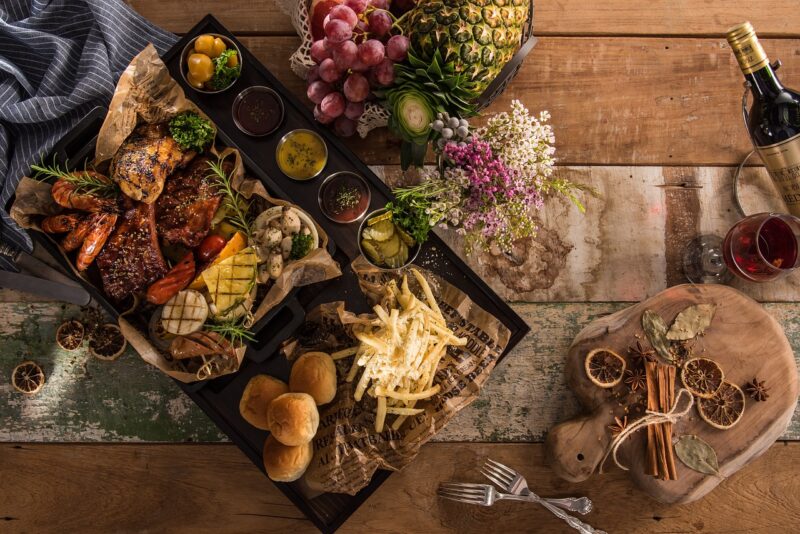Dining Through the Decades: A Culinary Journey from the 70s to Today
November 18, 2024

Food is more than just sustenance; it reflects our culture, lifestyles, and societal changes. From the disco-infused recipes of the 1970s to the health-conscious meals of the 2020s, dining trends encapsulate the spirit of each decade. In this article, we’ll take a delicious journey through the decades, exploring the culinary trends that have shaped our palettes and dining experiences.
1. The 1970s: The Era of Convenience
The 1970s marked a pivotal time in American dining, characterized by the rise of convenience foods and international flavors. This decade saw the introduction of microwave ovens, altering not just how meals were prepared but also what foods were consumed. Popular dishes from this era included:
- Quiche Lorraine: This French dish became commonplace at brunches, reflecting a growing fascination with international cuisines.
- Fondue: A culinary craze that invited communal eating, fondue parties became the social dining trend of the decade.
- TV Dinners: Pre-packaged meals became wildly popular, catering to the fast-paced lifestyles of a working population.
As more households turned to convenience, home cooking began to shift toward easy meals, utilizing the quick-fix mentality that defined the decade.
2. The 1980s: Health Consciousness and Gourmet Cooking
As we transitioned into the 1980s, the culinary landscape began shifting towards health consciousness, spurred by increasing awareness of nutrition and dietary needs. This decade marked the beginning of what would be an ongoing trend towards healthier eating habits.
- Low-Fat Diets: With the rise of low-fat diets, foods marketed as ‘light’ or ‘fat-free’ became staples on grocery shelves.
- Gourmet Cooking: The influence of celebrity chefs like Julia Child and Wolfgang Puck propelled gourmet cooking into the mainstream. Restaurants began offering upscale versions of classic dishes.
- Vegetarianism: The movement gained traction as more people sought meatless meals, leading to the introduction of vegetarian dishes in restaurants.
The 1980s also saw a rise in food exoticism, with ingredients like basil, sun-dried tomatoes, and balsamic vinegar becoming popular among home cooks.
3. The 1990s: Fusion and Global Flavors
The 1990s introduced the concept of fusion cuisine, where chefs began combining elements from various culinary traditions to create innovative dishes. This decade was marked by experimental dining experiences that opened the door to global flavors.
- Asian Influences: Sushi and Thai food became mainstream, showcasing a growing fascination with Asian culinary traditions.
- Tex-Mex Cuisine: The blending of Texan and Mexican cuisines fostered famous dishes like fajitas, nachos, and quesadillas.
- California Cuisine: Emphasizing fresh produce and local ingredients, California cuisine gained popularity and defined a healthy approach to cooking.
The rise of food television and celebrity chefs further catalyzed these trends, igniting interest in varied culinary traditions and techniques.
4. The 2000s: Farm-to-Table Movement
As we entered the new millennium, diners began to place greater emphasis on sustainability and organic, local sourcing. The farm-to-table movement became a defining feature of 2000s dining.
- Organic Foods: A surge in popularity for organic products led to grocery stores stocking more natural choices.
- Sustainable Seafood: Consumers became increasingly aware of overfishing and began opting for sustainably sourced seafood.
- Food Festivals: Events celebrating local foods and regional cuisines started to pop up, highlighting community and sustainability.
Health-focused restaurants thrived, offering menus rich in local produce, sustainable proteins, and seasonal ingredients.
5. The 2010s: The Culinary Renaissance
The 2010s heralded a culinary renaissance with the introduction of technology into cooking and dining experiences. Social media transformed how we share food, influencing both home cooking and restaurant dining.
- Food Blogging and Social Media: Platforms like Instagram became the go-to for showcasing food, leading to the creation of visually stunning dishes.
- Meal Kits: The rise of meal kit services allowed consumers to try new recipes and ingredients conveniently and efficiently.
- Plant-Based Diets: Interest in plant-based eating surged, and restaurants began featuring vegan dishes prominently in their menus.
Creativity flourished, and chefs embraced innovative techniques and technology, leading to a new era of culinary artistry.
6. The 2020s: A Focus on Wellness and Innovation
As we navigate through the 2020s, the dining experience continues to evolve. The focus has shifted toward wellness, innovation, and community.
- Health and Wellness: Restaurants are increasingly offering functional foods that promote health, incorporating trends like adaptogens and superfoods into their dishes.
- Culinary Technology: New cooking technologies such as sous-vide and air frying gained popularity, creating options for healthier preparations of classic dishes.
- Community Dining: After a period of social distancing, there’s a resurging interest in communal dining experiences that foster community connection.
The culinary landscape today is as diverse and dynamic as ever, promising exciting dining experiences that cater to evolving tastes and values.
Conclusion
Dining has indeed transformed over the decades, a reflection of cultural shifts, technological innovations, and global influences. Whether embracing convenience in the 70s, experimenting with fusion in the 90s, or focusing on wellness in today’s world, each culinary trend tells a story of its time. As we continue to savor the flavors of the past while embracing the future, one thing is clear: our relationship with food will always evolve, enriching our dining experiences and nourishing our bodies and souls.








